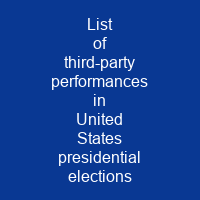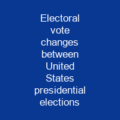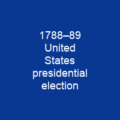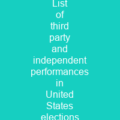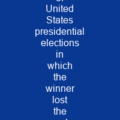In the 59 presidential elections since 1788, third party or independent candidates have won at least 5. 0% of the vote or garnered electoral votes 12 times. This does not count George Washington, who was elected as an independent in 1788–1789 and 1792. The last third party candidate to win a state was George Wallace of the American Independent Party in 1968. The most recent third party candidates to receive an electoral vote were Libertarian Ron Paul and Sioux Nation independent Faith Spotted Eagle in 2016.
About List of third-party performances in United States presidential elections in brief

Southern Whigs and a minority of northern Whigs coalesced around the anti-immigrant and anti-Catholic American Party. Their candidate was former President Millard Fillmore, who won 22% but carried only one state, Maryland, thus winning 8 electoral votes. Many Northern Whigs, like Abraham Lincoln, joined the newly formed Republican Party. The Republicans ran John C. Frémont, who finished second with 33. 1% and 114 electoral votes, but only won 39 electoral votes from three states. This election would mark the first time any third party received more electoral votes than the major party in a US presidential election. Abraham Lincoln ran his re-election campaign as a National Union party, consisting of both Democrats and Republicans, known as National Union Republicans. Abraham Lincoln won the election in 1864, but in 1872 Greeley was nominated by the Liberal Republicans to oppose Republican President Ulysses S. Grant. Greeley won six states and 43% of popular vote, but died shortly after the election. The Liberal Republicans were a breakaway party that was dissatisfied with Grant’s presidency.
You want to know more about List of third-party performances in United States presidential elections?
This page is based on the article List of third-party performances in United States presidential elections published in Wikipedia (as of Dec. 06, 2020) and was automatically summarized using artificial intelligence.
